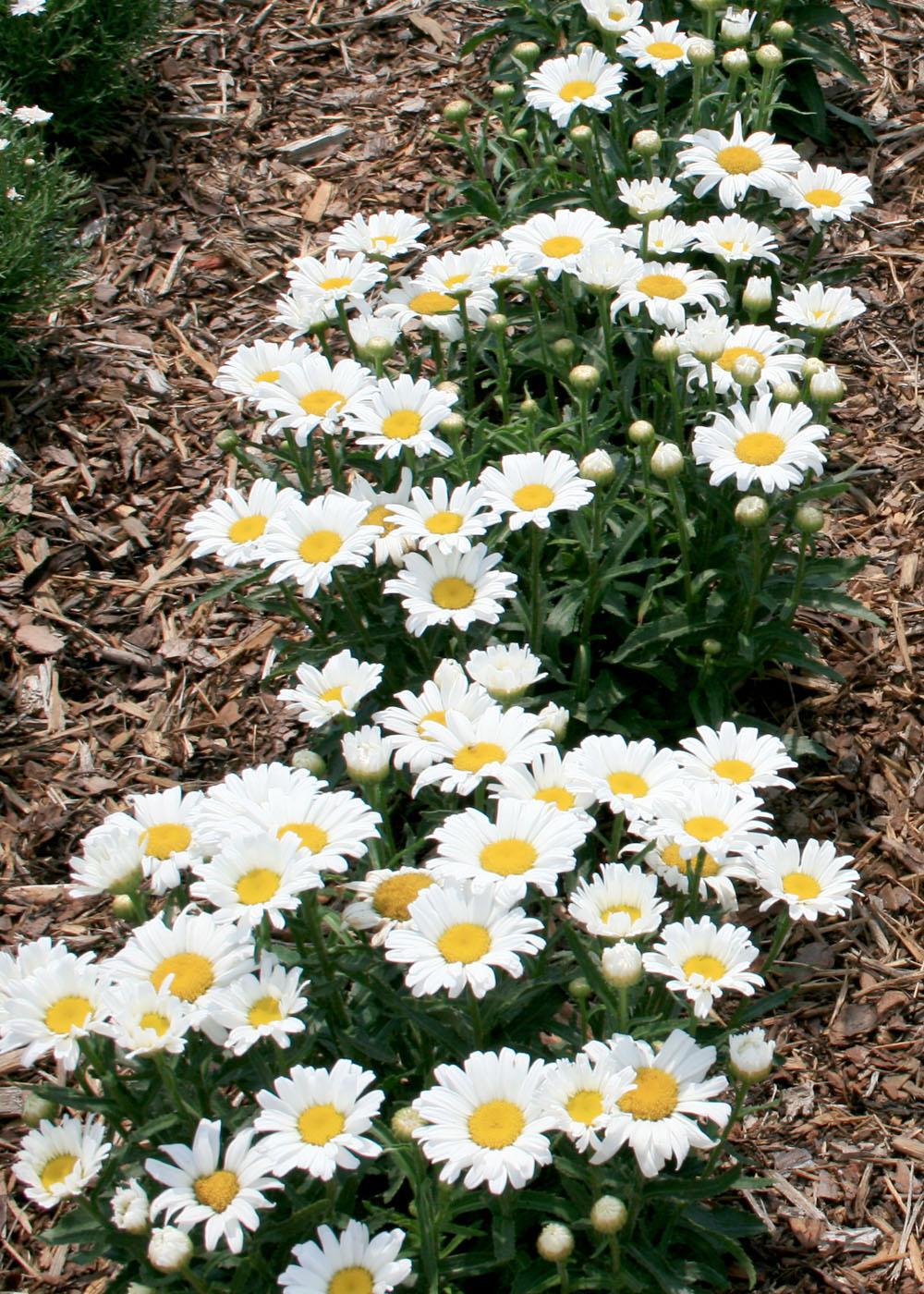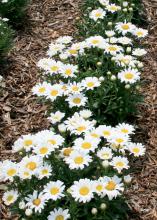Information Possibly Outdated
The information presented on this page was originally released on August 19, 2010. It may not be outdated, but please search our site for more current information. If you plan to quote or reference this information in a publication, please check with the Extension specialist or author before proceeding.
Shasta daisies shine in modern gardens
When we hear the word “daisy,” most of us think of the flower with white petals and a yellow center that we used as children to play the “loves me, loves me not” game.
Growing the Shasta daisy in your garden can bring back some of those old memories. Known botanically as Leucanthemum x superbum, Shasta daisy is a classic garden plant that is as at home in the modern landscape as it is in the cottage garden. It really shines in the garden.
Shasta daisy flowers have the classic daisy look: brilliant white petals surround a bright center. Some of the newer selections have some yellow in the petals. The flowers can range from 2 to more than 5 inches across.
Flowering starts in late spring and continues throughout the summer and into the fall. Shasta daisy has single, double and frilly flower forms. You will have to search, but there are currently more than 60 selections available.
Shasta daisies can be up to 4 feet tall, but most are 2 to 3 feet tall. Two that I have grown in my garden are Alaska and Becky. Alaska is 3.5 feet tall and wide with 4-inch diameter flowers. Becky is 30 inches tall and wide with 3.5 inch diameter flowers. These selections are best suited towards the back of the perennial border, as are most other Shasta daisies.
A new selection I am really impressed with is Daisy May, a small plant only 15 to 18 inches tall and about a foot wide. Its size makes it a great candidate for the front portion of the perennial border. The Daisy Mays we have planted at the Truck Crops Experiment Station in Crystal Springs have held up well in the Mississippi heat and humidity. Daisy May’s size also makes it a fantastic thriller plant in containers.
Shasta daisies perform best in full sun and well-drained, fertile soil. They will not last long in your garden if the soil is wet and heavy. Consider planting in raised beds if your garden soil is less than ideal.
Add mulch to reserve moisture and keep the soil cool, but don’t use bark or wood chip mulches. The best mulch to use in Mississippi is pine needles, as they allow good drainage and are light and airy.
In the most ideal conditions, Shasta daisies are short-lived perennials. Divide the clumps every couple of years to help keep the plants vigorous and healthy. Regular division also benefits flower production.
Many flowering perennials benefit from the removal of spent flower heads, and Shasta daisy is no exception. Deadhead to keep the plant showing off those beautiful flowers all season long.
Consider companion planting Shasta daisies with purple coneflowers, bee balm, catmint and sages. The brilliant flower of Shasta daisy will shine the spotlight on the companion plants.
Whether grown in a mass or as a specimen, Shasta daisy will attract butterflies and other insects. Their bright flowers will provide lots of enjoyment all season long.








